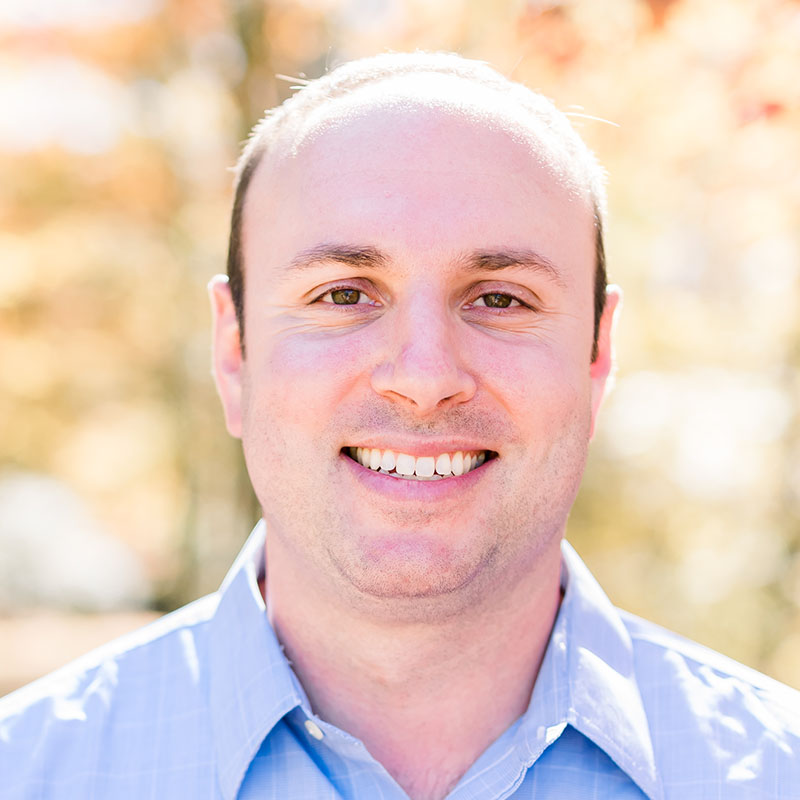
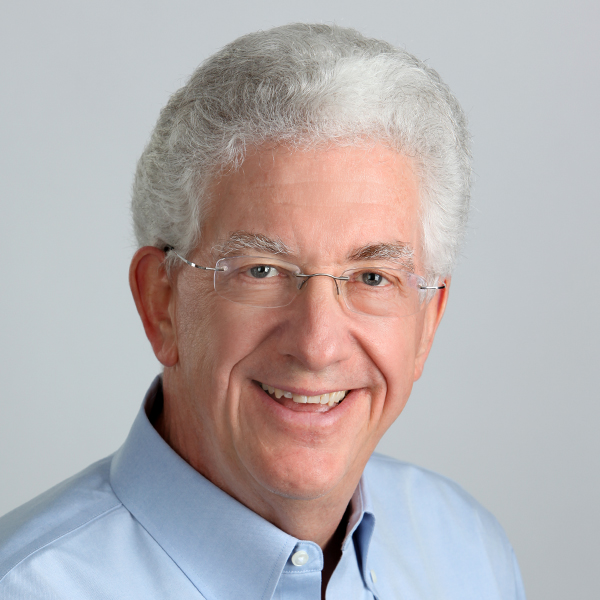
GrantEd: How did the two of you meet, and what do you think is the other’s greatest strength?
David: When Moishe House shifted from being a program within a private foundation to an independent 501c3 organization, I didn’t know what a CEO was or what a CEO did. One day I was working on a project, and the next day I had a business card that said “CEO.” We were trying to figure out how to be an organization and not just a program. I met Jim at an UpStart pitch night, and he invited me to visit him at his office. I was able to spend time with a CEO and ask him questions. We would work things out on his whiteboard. Jim’s biggest gift is that he asks the right questions, and we needed that, because we didn’t know the right questions to ask.
Jim: I think one of the unique things about David is his ability to engage new supporters in discussion. He asks serious questions about issues he is thinking about and really listens to the answers. I’ve been on a lot of Jewish nonprofit boards and felt his questions were some of the most penetrating questions I have ever been asked. I am the guy with the white hair and a little bit of experience that lets him pick my brain occasionally.
GrantED: What have you learned from each other, and what makes the relationship work so well?
David: When I first met Jim, my time horizon for asking questions or thinking about the future was probably two weeks to three months out. From Jim’s perspective that was nonsense, but he didn’t make me feel bad about it. He kept pushing me to ask: what is this going to mean in a year, in two years, and in five? How is it going to help build the team or hurt the team? What is it all going to look like down the road?
Jim: Not many CEOs cross the line from startup founder to a million dollars in revenue. Even fewer make it to $5 million and even fewer to $10 million. David is at $15 million and going strong. David is always learning.
David: It helps that Jim is not stuck in his ways and is forgiving. He might have an end goal, but he never states that end goal too early; he just tries to get us there. There are times when it has taken longer than I think he would want for us to get to a certain place or move in a certain direction, but he doesn’t hold it against me. I’ve never felt that if I am not exactly where Jim thinks I need to be at the moment he will just cut things off. I was never a process person, and Jim has helped me to value process. He also helped me get comfortable with investing in infrastructure. My mentality was do as much as you can for as little as you can. Jim has built bigger things than I have and showed me that doing things without proper investment could be shortsighted. I don’t know what I don’t know, and so I don’t want to get pushed on it. But I am also not just blindly saying “yes”. Jim has a way of showing me why I need to do something and letting me get there at my own pace.
Jim: It’s David’s organization. I am going to do what I can to help him, but in the end he has to make those calls.
David: Knowing that enables us to have healthy conflict where we bring our actual ideas and beliefs to the table. Part of what makes our relationship work is knowing that we can have a disagreement, resolve it, and keep on going. We both see each other as having the best intentions. I believe 100 percent that everything Jim does is in the best interest of Moishe House and my leadership.
GrantED: What advice do you have for other funder-nonprofit partners?
Jim: I don’t want to be so presumptuous as to tell other funders what to do. For my own philanthropy and the way that I support Moishe House and other organizations, it is about empowering the team that is there. I am interested in helping that team figure out what they want to get done and support them without any strings attached.
David: I wouldn’t try to force a transactional relationship to be non-transactional. Some people want to give and don’t want to be more involved, and that is fine. When I met Jim, I was trying to figure out how to be a CEO, how to build an organization, and how to scale. And those are three areas where Jim has the greatest expertise of anyone I have ever met. When you are building a relationship, the value the other person brings needs to align with the value you need in the organization.
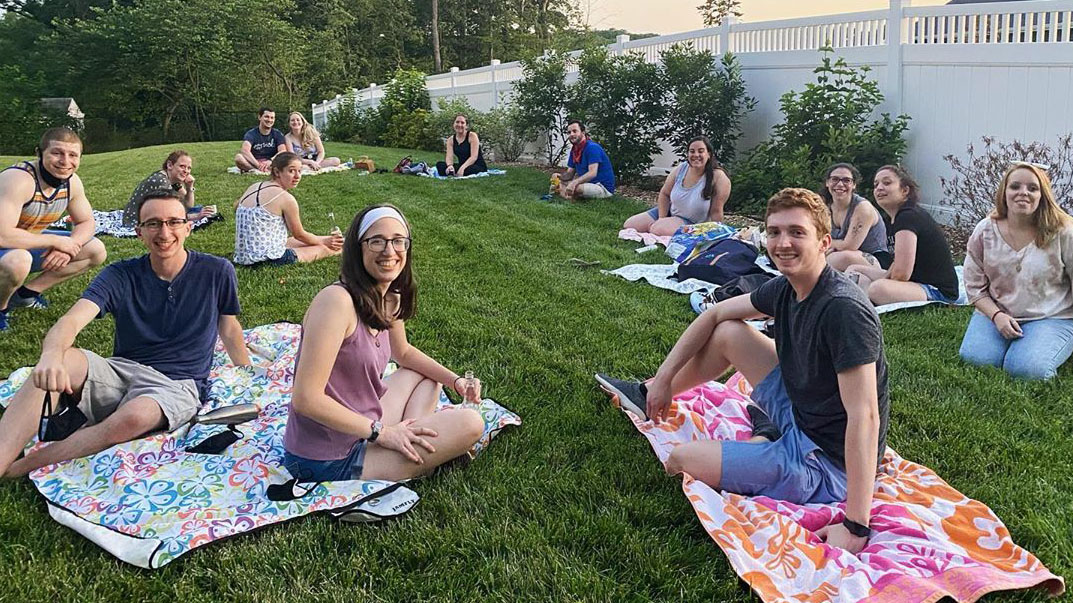
Jewish religious life is founded upon interlocking frameworks of giving and receiving. One of the very first asks made of the Jewish people was to donate the materials necessary to construct the mishkan, the tabernacle, that was to house God’s presence in the wilderness. God commands the people to bring whatever they are moved to bring, and the people are so eager and generous to contribute that the donations outstrip the need. Finally, Moses says to the people, “Let no man or woman make further effort toward the sanctuary,” because “their efforts had been more than enough” (Exodus 36:7). For a glorious moment, they had everything they needed to create a relationship with God. It was enough. But, was it sustainable?
It’s of crucial importance for grantmakers and grantseekers to focus on financial sustainability when looking toward the economic health and potential impact of an organization. How do we make sure that our organizations are operating in a way that is sustainable both for the current moment and beyond to ensure future growth? What would it require on the part of grantmakers to ensure that organizations have what they need to allow them to take the necessary risks that are part of healthy growth? What would it require on the part of organizations seeking grants to ensure that their financial and human resource model is sustainable?
Giving didn’t end with that initial call for resources to build the mishkan in the wilderness. Rather, the Torah and the rabbis instituted many systems of giving and receiving rooted in tithing and tzedakah. In Deuteronomy, we’re commanded to give a tenth of our yield every third year to the “stranger, the orphan, and the widow” as well as to open our hands and give freely to those in need. These giving practices aimed to create a society that operated sustainably, a society in which the community was responsible for giving toward the upkeep of communal and religious structures and leaders were responsible for taking care of those in need.
Judaism teaches us that the work of creating financially sustainable societies is holy work. You can explore more on these teachings in this self-guided session, “The Holy Work of a Balanced Budget.”
A scholar of philanthropy explains how mega-donor MacKenzie Scott is modeling five best practices for social change giving: Don’t attach strings; Champion representation; Act first, talk later; Don’t obsess about scale; Leverage more than money.
A “blog in pictures,” this tool offers ways to visualize the role overhead expenses play in helping nonprofits achieve their goals.
Leaders of small nonprofits that operate on shoestring budgets explain how funders can help them be more effective, in particular by simplifying grant application and reporting processes, offering more unrestricted and multiyear funding, and developing a universal application
Arguing that foundations are stuck in a mindset of “delusional altruism” —an almost-always unconscious state of being that leads them to hold on to deceptive and illogical behavior that undermines progress — the author, a philanthropy adviser, offers a roadmap for how to confront and overcome philanthropic delusions and permanently embrace the important changes made since the Covid pandemic began.
Note: You must create a free account to view Chronicle articles and must subscribe to view more than two. If you are a JFN member, email [email protected] to find out about a 20 percent discount offer on Chronicle subscriptions.
An inside look at a foundation’s process for awarding arts grants, relying on input from a wide variety of sources and incorporating equity considerations. The article includes advice on how other foundations can make their grantmaking processes more democratic and inclusive.
This article in the CANVAS Compendium, a newsletter for funders of Jewish arts and culture, describes how the Barr-Klarman Massachusetts Arts Initiative (BKMAI), a partnership between two foundations that provides support and stability for arts nonprofits, can be seen as a model for other funders to emulate. Organizations in this six-year initiative receive multiyear unrestricted operating grants coupled with capacity-building support for board and staff leadership (including individualized coaching, technical assistance, and cohort learning opportunities with expert trainers focused on building financial health and financial sustainability).
Concerned that traditional written reports are burdensome to grantees and not especially useful for foundations, Rachel Kimber of the Arcus Foundation describes her quest for alternative measures that will be less time-consuming for all while promoting accountability.
A description about an analytical tool that provides pure, candid information to funders about the context in which they are perceived by their grantees.
Links to the common grant application form, the common report form, and anicilliary documents. A link to workshop tutorials run by Grantmakers of Western Pennsylvania is also listed.
An interactive discussion between two grantmaker/grantseeker pairs as they reflect on the ways that the Covid-19 pandemic has impacted their relationships. We discuss how grantmakers’ philanthropic practices have changed — from the start of the pandemic to the current day — and what’s to come. In particular, we focus on what lessons we’ve learned in the past year and what practices instituted as a result of Covid we may want to make permanent.
A thorough and detailed guide to the philosophy, inception, implementation, and valuation of participatory grantmaking.
A professional with the Hewlett Foundation describes how working with a participatory design team charged with providing input for the parameters of a participatory grantmaking process exposed her to a rich diversity of perspectives and opinions, and ultimately resulted in better grantmaking.
A year-long project of Philanthropy Colorado to create a cohort of funders and nonprofit organizations intentionally exploring openness yields important insights and guidance into the reciprocal nature of the relationship between communication and sector strength.
In episode 26 of Jewish Funders Network’s “What Gives?” philanthropy podcast, Fay Twersky, the President and Director of the Atlanta-based Arthur M. Blank Family Foundation (and former vice president of the William and Flora Hewlett Foundation) talks with JFN President and CEO Andres Spokoiny about everything from the critical role philanthropy played in the LGBTQ rights movement to participatory grantmaking, to strengthening grantmaker-grantseeker relationships.
Many foundations waste an extraordinary amount of grantseekers’ time, because they replicate questions from other foundation’s applications and are structured in a non-user-friendly manner. The result is that smaller nonprofits cannot compete with large, well-staffed ones. This article shares research about this phenomenon and offers suggestions for how foundations can help streamline the process.
A news article about the #FixTheForm movement, which is calling on foundations to make the entire grant application process easier and more accessible.
Editorial applying the findings of the Center for Effective Philanthropy report New Attitudes, Old Practices: The Provision of Multiyear General Operating Support to the funding gap created by the Covid-19 pandemic. [Registration required]
This article describes the unique “restorative economics” approach of the $445 million Kataly Foundation. Using both grants and investments, the idea is to provide capital to groups in areas that have been shut out of the economic mainstream and then make sure any investment returns stay in those neighborhoods. That often means building relationships with smaller organizations led by Black and Indigenous people and other people of color who haven’t received much philanthropic support and providing grant dollars to leaders with a vision.
Note: You must create a free account to view Chronicle articles and must subscribe to view more than two. If you are a JFN member, email [email protected] to find out about a 20 percent discount offer on Chronicle subscriptions.
Editorial considering the potential for growth and dynamic change provided by the new paradigms of the Covid-19 pandemic.
Editorial in support of streamlined grant application and approval processes to address the challenges of the Covid-19 pandemic and to increase operational impact going forward. Part 1 of 2.
Editorial analyzing the benefits of the streamlined grant application and approval process to address the challenges of the Covid-19 pandemic, and advancing the position of the benefits of retaining this approach. Part 2 of 2.
Summary of the “Funder Support During the COVID-19 Pandemic” report by the Center for Effective Philanthropy detailing the effects of the global Covid-19 pandemic on nonprofit operations categorized by funding source. A link to the report is included.
Part of Leap Ambassador’s Funding Performance campaign encouraging funders to rise to the urgency of this moment. This monograph, featuring six essays and eight authors, utilizes “positive peer pressure” in order to advocate for improved funding practices. Each essay contains practical advice about the specific practices that produce outsized progress on urgent issues of our time.
This case study offers tips for managing staff resistance to accountability requirements. It highlights several best practices that foundations may want to adapt and/or adopt.
This article highlights several donors who have ultized giving circles to democratize and diversify their philanthropy.
Grace Nicolette and Phil Buchanan of The Center for Effective Philanthropy interview Tiffany Cooper Gueye, COO at Blue Meridian Partners, about challenging misperceptions between donors and nonprofits; the advantages of unrestricted versus project-based philanthropy; and building necessary trust through research, personal outreach, and objective metrics.
David Cygielman is the Founder and CEO of Moishe House, a global leader in peer-led Jewish young adult engagement. Jim Heeger, a former CEO of three tech firms, has supported Moishe House in various capacities including a turn as Board Chair and his current role as pro bono acting Chief Financial Officer. David and Jim have been in conversation for 10 years.
Joni Blinderman is the Associate Director of the Covenant Foundation, a New York-based foundation funding Jewish education in North America. Ilana Ruskay-Kidd is the Founder and Head of School of the Shefa School, a New York Jewish day school serving children with language-based learning disabilities. Joni and Ilana have been in conversation for seven years.
This tool, which can be used by both grantmakers and grantseekers, is adapted by GrantED from one created by Exponent Philanthropy in partnership with the National Council of Nonprofits, with support of the Fund for Shared Insight.
In 2017, Exponent Philanthropy and the National Council of Nonprofits set out to explore the complicated relationship between funders and nonprofits by bringing together hundreds of funders and nonprofits to listen, learn, and improve the relationship from both sides. The original toolkit is based on what they learned during these events and is designed to help grantmakers and grantseekers understand the hallmarks of great funder–nonprofit relationships, assess their competencies in these areas, and identify ways in which they might improve. The adaptation provided by GrantED seeks to increase the relevance of this tool for the Jewish landscape.
An in-depth profile of the founders of the Raikes Foundation from early beginnings through the present day, with particular insights about increasing equity, its growth mindset, and the value of objectivity.
This article draws on notable sources to describe effective strategies for grantmakers to engage with nonprofits towards the goal of building and enhancing sustainable operations.
An overview of strategies for assessing the necessity, practicality, and impact of general operating support grants to nonprofit organizations.
A case study about how a Jewish women’s fund based in San Francisco adhered to three goals: not wanting to burden already overextended nonprofits, learning from and utilizing the process and knowledge of other funds whose missions aligned with their own, and minimizing “process” so they could be more strategic, targeted, and efficient.
A Q&A with a philanthropist and a capital adviser who are are experimenting with a new way to redistribute wealth that is grounded in antiracist values and accountability: handing leaders of color a large amount of unrestricted money.
Brest and Wolfson discuss the benefits of applying risk management techniques to enhance the effectiveness of grant giving strategies. Subscription required.
The CEO of the Council on Foundations argues that foundations will not earn the public’s trust or be as effective as they need to be until they solicit (and listen to) feedback from grantseekers and involve a more diverse group of people in their decision making.
Two foundation leaders reflect on perhaps the most significant benefit of having trusting grantee relationships: Working closely with grantees and learning from them led to a number of unique funding opportunities that their grantees themselves initiated, and which the foundation otherwise would not have been able to pursue.
A look at what the 10 largest U.S. foundations did in response to the pandemic and what they plan to do next.
Note: You must create a free account to view Chronicle articles and must subscribe to view more than two. If you are a JFN member, email [email protected] to find out about a 20 percent discount offer on Chronicle subscriptions.
Learn how to best prepare for an evaluation for both grantmakers and grantseekers. This webinar provides concrete tools, tips, and tricks for both grantseekers and grantmakers to transparently share information, discuss challenges, and create a plan for the most impact.
Speakers:
Dr. Wendy Rosov - Founder & Principal, Rosov Consulting
Mike Boberg - Director of Impact Assessment, Jewish Foundation of Cincinnati
Marie Krulewitch-Browne - Executive and Artistic Director, ish
Rosov Consulting created a new resource, unique for GrantED, about how to successfully prepare for an evaluation. This tool kit guides both grantmakers and grantseekers through four key questions that will increase transparency and alignment.
Once you review the toolkit, you can find interactive worksheets to facilitate your own evaluation on this Miro Board.
A former monk who is now a writer, speaker, and chief vision officer at The Pollination Project, explains why trust-based philanthropy is not just more equitable but more effective and describes how the four values central to his work as a monk — faith, humility, relationship, service — are also key for philanthropists.
A healthy organization is not only more sustainable and impactful, but it is also a better place to work. Join GrantED to learn about how grantmakers and grantseekers can partner to improve organizational health, and in turn strengthen the Jewish communal field. Consultant Amy Tobin will share recommendations for aligning values, culture, capacity, and priorities so that organizations are better equipped to positively impact their communities. You will hear from Idit Klein, President and CEO of Keshet, and Liana Krupp, President and Trustee of the Krupp Family Foundation, who will reflect on their own grantseeker/grantmaker partnership and how they collaborate to prioritize organizational health.
In this webinar, Claire Knowlton, Director in Advisory Services at the Nonprofit Finance Fund, presents a conceptual review, framing overhead costs and how they are related to funding and mission.
The article argues that nonprofit funders should look to the business world for methods to enhance their giving.
Note: You must create a free account to view Chronicle articles and must subscribe to view more than two. If you are a JFN member, email [email protected] to find out about a 20 percent discount offer on Chronicle subscriptions.
An explanation of how building balanced peer-to-peer relationships with grantees contributes to greater equity, stronger impact, quicker response, and more efficient use of financial resources.
Exploring how a lack of gender equity negatively influences the power dynamics of funder-nonprofit relationships and restricts growth.
Summary of a companion piece to “New Attitudes, Old Practices: The Provision for Multiyear General Operating Support” compiled by the Center for Effective Philanthropy, analysing the survey responses of foundations and nonprofit executives toward multi-year general operating support. This piece provides resources for foundations and funders seeking to significantly increase general operating support. A link to the piece is included.
Summary of a companion piece to “New Attitudes, Old Practices: The Provision for Multiyear General Operating Support” compiled by the Center for Effective Philanthropy, analysing the survey responses of foundations and nonprofit executives toward multi-year general operating support. This piece provides interviews with and in-depth analysis of five diverse foundations that have significantly increased general operating support. A link to the piece is included.
An overview of the genesis, practice, applications, and benefits of participatory grantmaking.
This article describes the work of the Trust-Based Philanthropy Project and efforts to ensure both that funders listen to grantees and that nonprofits listen to the communities and constituents they serve.
A template grant application form, with instructions provided by the National Network of Grantmakers.
Summary of a report compiled by the Center for Effective Philanthropy analyzing the survey responses of foundations and nonprofit executives toward multi-year general operating support. A link to the report is included.
A link to the common grant application form for organizations in New York and New Jersey, with instructions.
An analysis of why foundation CEOs are reluctant to activate multi-year general operating support, something identified in the Center for Effective Phillanthropy report New Attitudes, Old Practices: The Provision of Multiyear General Operating Support.
Case study of philanthropic initiatives in response to Covid-19 utilizing data from a survey of the 500 largest (by assets) foundations in the United States.
A detailed report and analysis of the massive response of the global philanthropic community to the challenges of the initial six months of the Covid-19 pandemic, categorized by donor type and recipients.
Summary of a report detailing increased unrestricted giving by donor organizations in response to the challenges of the Covid-19 pandemic. A link to the report is provided.
“With some meaningful changes from the current norm, project grantmaking can be consistent with supporting nonprofit financial health. Indeed, project grants do not have to be the four-letter word of philanthropy.” Rodney Christopher, Director of Philanthropic Services at CEP explains how.
An in-depth series where funders and nonprofit executives share their stories and perspectives about how grantee inclusion contributes to enhanced effectiveness.
This article by lead professionals at Schusterman Philanthropies and the Jim Joseph Foundation encourages Jewish foundations to follow the lead of major secular foundations and commit to offering more general operating support to nonprofits.
In response to a conversation about obstacles nonprofit leaders and artists experienced when applying for foundation support, the writer created a checklist for making philanthropy more of a collective process, one that better reflected the grantees, not just grantmakers.
Each video this series, created by the Jim Joseph Foundation, covers a different topic about budgeting, exploring the “what, why, and how” to help nonprofits streamline their budgeting processes and “lift the veil” off of the funder’s perspective. In addition to the videos, the page contains downloadable supplemental materials, including articles and sample budgets.
This session at the Jewish Funders Network 2021 International Conference introduces participants to GrantED. In this workshop, led by Aliza Mazor and Taylor Epstein of UpStart and featuring Deena Fuchs of the Micah Foundation, sample some of what the hub has to offer through text study, discussion, and interactive exercises.
Four critical elements of grantmaker-grantseeker relationships are explored and illuminated via real-life examples from the authors’ lived experience.
A thoughtful and detailed discussion of the changes to funding and relationships during the global Covid-19 pandemic, with an emphasis on increased communication and integration.
The author argues there is an urgent need to make flexible funding more available to grantseekers. She also explores whether presenting various points of view helps to test and push the boundaries of grantmaking.
A study of Social Venture Partners Arizona shows how increased deployment of general operating support grants can increase a nonprofit’s impact.
Strategies to improve outcomes for communities and organizations that are often sidelined by the traditional grantmaking process, explore how to reduce bias and how begin collecting and tracking the demographic data that can inform impact.
This article was originally published by PEAK Grantmaking. PEAK Grantmaking is a member-led national association of more than 5,000 professionals who specialize in grants management for funding organizations. PEAK members come together to form a vibrant community of practice that advances shared leadership and learning across the sector – helping funders of every size and type maximize their mission-driven work through living their values. Learn more at peakgrantmaking.org and follow @PEAKgrantmaking on Twitter and LinkedIn.
There is limited field-wide data about general operating support and capacity building, as well as the practice of combining the two. As part of a broader research study exploring the provision of multiyear GOS, CEP sought to learn more. Here’s what its research found.
Writer/nonprofit advocate Vu Le asserts that general operating funds are necessary for nonprofits to be successful and that grantmakers who refuse to fund overhead are behaving unethically.
A conversation between Jewish Theological Seminary Professor Jack Wertheimer and Deena Fuchs of the Micah Foundation about “Grantees and Their Funders,” Jack’s report on what professionals at Jewish nonprofits experience while working with funders.
An in-depth explanation of the “seven pillars” framework of excellence, compiled from the analysis of high-performance organizations.
Episode 20 of What Gives? the Jewish philanthropy podcast from Jewish Funders Network.
Dena Libman of the Azrieli Foundation and Jack Wertheimer of Jewish Theological Seminary talk about findings from Wertheimer’s 2020 “Grantees and Their Funders” report, one of the catalysts for GrantED: Stronger Relationships, Greater Impact
When a philanthropic program doesn’t include beneficiaries in its decision-making processes—nonparticipation—it exposes itself to risks that reduce its likelihood of success. These risks include functional risks related to program efficiency and effectiveness, and ethical risks related to the morality of the program and its effects. This article offers a practical tool to help grantmakers determine the risks of nonpraticipation and the opportunities participation might create.
Editorial in support of universal grant application guidelines and requirements.
This article by a fundraiser turned funder makes the case for why unrestricted grants are better than restricted or project grants.
Professor Lila Corwin Berman discusses her book, “The American Jewish Philanthropic Complex,” which explores the history of Jewish philanthropic institutions, questions U.S. tax policies that benefit larger donors and lead to greater wealth inequalities, and questions the wisdom of putting money in endowments and donor-advised funds rather than spending it on pressing needs.
This will be a short paragraph about this resource. Ad maior mod magnitis ad ut voluptius in pra etur atus. Se viducita cusandit accatet mi, suntur re ne nusamuscia voluptatiam et laborer ercipsum et faceprat maximusae explit omniet laccus.
This report contains a section on power dynamics and ways foundations are seeking to address power imbalances.
Using findings from CEP’s Grantee Perception Reports, the author shares what kinds of reporting is useful and what kinds of reporting merely waste the time of both grantseeker and grantmaker.
In this webinar, Claire Knowlton, Director in Advisory Services at the Nonprofit Finance Fund, presents a conceptual review, framing overhead costs and how they are related to funding and mission.
A joint project of Jewish Funders Network and UpStart (with help from Hadar), GrantED was inspired by the 2020 study “Grantees and Their Funders: How Professionals at Jewish Not-for-Profits Experience Working with Grantmakers” by Jewish Theological Seminary Professor Jack Wertheimer. This groundbreaking study found that while Jewish nonprofit leaders overall report positive working relationships with funders, a number shared some difficult experiences:
In response to these findings, a panel of 15 foundation professionals, philanthropists, and nonprofit professionals convened and issued a set of guidelines for grantmakers and grantseekers alike, that include:
GrantED exists to support and nurture grantmakers and grantseekers so that they forge authentic relationships, communicate effectively, understand and navigate power dynamics, and sustain impact over time.
Here are some ways you may want to use our online resources, a mix of original and curated material :
We plan to convene online (and when possible, in person) facilitated conversations between grantmakers and grantseekers to explore some of the topics and themes featured on this site. Sign up for our email list here.

Joni Blinderman is the Associate Director of the Covenant Foundation, a New York-based foundation funding Jewish education in North America. Ilana Ruskay-Kidd is the Founder and Head of School of the Shefa School, a New York Jewish day school serving children with language-based learning disabilities. Joni and Ilana have been in conversation for seven years.
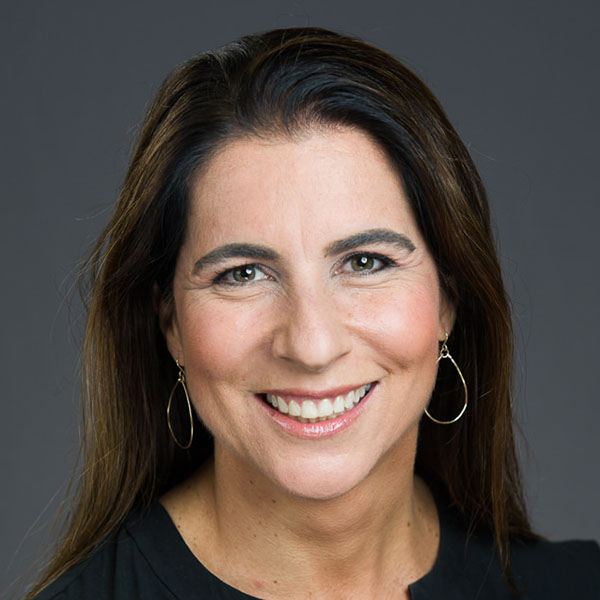
GrantED: How did you first meet and what were your first impressions of each other?
Joni: We at the Covenant Foundation had been following Ilana’s career at the JCC [of Manhattan], where the early childhood center she ran had such a stellar reputation. We had our eye on Ilana before we ever met. I think it is incumbent upon any philanthropic professional to keep their eyes on talent out in the field. We’re investing in people as well as ideas.
Ilana: I came to see you early in my process [of establishing Shefa] when Shefa didn’t even have a name. I remember coming in to sit with you and Harlene, and that you gave me so much of your time, which I really appreciated. Sometimes when you come to see a funder, you feel a few minutes into the conversation that they are signaling you to get to the point. I never felt that way with you. I remember how much time and attention you gave to the idea. You asked a lot of questions, not in a challenging way but in an interested way. I walked out of the conversation feeling encouraged. You didn’t say, “There is going to be money for you,” but you did ask me to keep in touch.
Joni: I find it moving and validating for you to talk about our first meeting this way, because this is us doing our job.
Ilana: The Covenant Foundation has a lot of breadth in terms of what it supports in Jewish life and Jewish education. I remember in that first conversation, you put me in touch with a few people you thought I ought to be talking to and you recommended some books for me to read. One of my first impressions of both you and Harlene [Appelman, who is Covenant’s Executive Director] is that you like to connect people and you see it as part of your job. The first time I submitted a grant report, you wanted to discuss it. I was nervous about that conversation and worried that you wanted to make sure everything was perfect and exactly what we promised in the proposal. But as we discussed it, I realized that you were looking for reflection and insights: What did I think was going to happen? What actually happened? Why do I think that happened? How did I pivot? How did that work? Covenant wants a lot of reporting and a lot of checking in, and I respect that. I think that is part of why you do such a good job. It isn’t in my nature to slow down, so knowing that reflection is important to you helps me to prioritize it in my work.
GrantEd: Joni, what’s the reason for all the reporting and checking in?
Joni: The proposal is essentially the agreement between the grantee and the foundation. We want to know how the work is progressing throughout the life of the grant. We are deeply interested in learning about the successes and the challenges the grantees are facing and how they are responding as they implement their project. We know just how dynamic the work is on the ground, and we want to support our grantees as they consider adapting the original project design when things are not working as anticipated. In addition, we are interested in understanding what this learning could mean for the field. This is what it means to us to be a “teaching and learning foundation.” The reporting protocols create an opportunity for reflection so that we can learn, the grantee can learn, and potentially the field can learn. We also see this teaching as going both ways — we learn from our grantees and our grantees learn from us. Part of the duty and responsibility of philanthropic professionals is to gather and share knowledge.
Ilana: It is completely fair to ask, “How do you know if you made a difference?” You can easily end up measuring what is easy to measure and not necessarily what is making a difference. Sometimes you sense a change that is not easily quantifiable. I think we need to keep trying to understand those hard-to-measure changes, even if the process is messy.
GrantED: What do each of you think is most important in creating a successful grantmaker-grantseeker relationship?
Joni: In order to create a real culture of learning and sharing among grantmakers and grantseekers, you need to create as much equality as possible in the relationship. I know that having money in the mix makes that hard. Funders and grantees who are unable to break down those barriers can create an atmosphere of discomfort and fear.
Ilana: Grantmakers and grantseekers have their own interests and are constrained in different ways, but each wants to use the resources they have responsibly to make good things happen. When respect and trust are present you can work out whatever else arises.
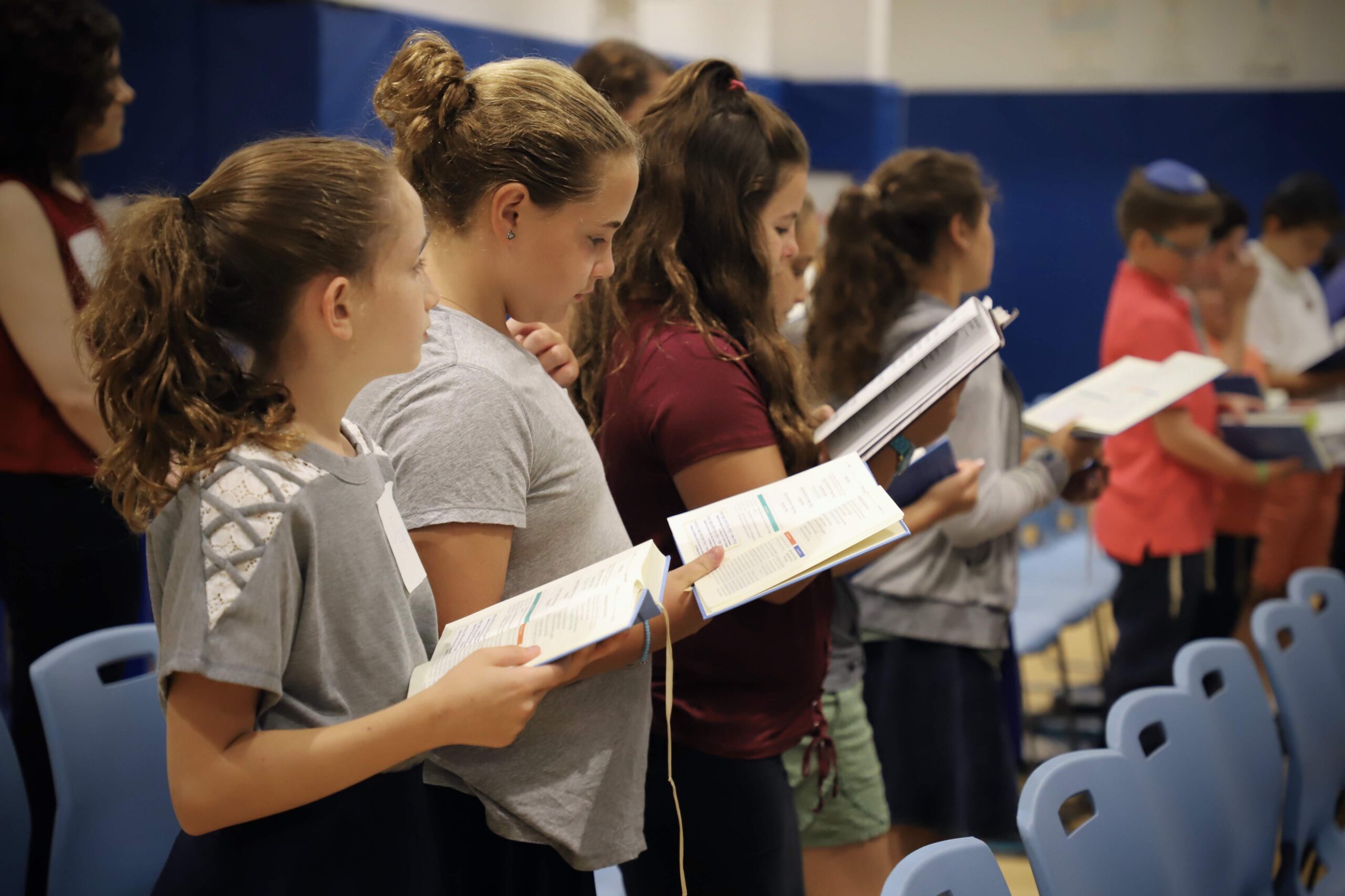
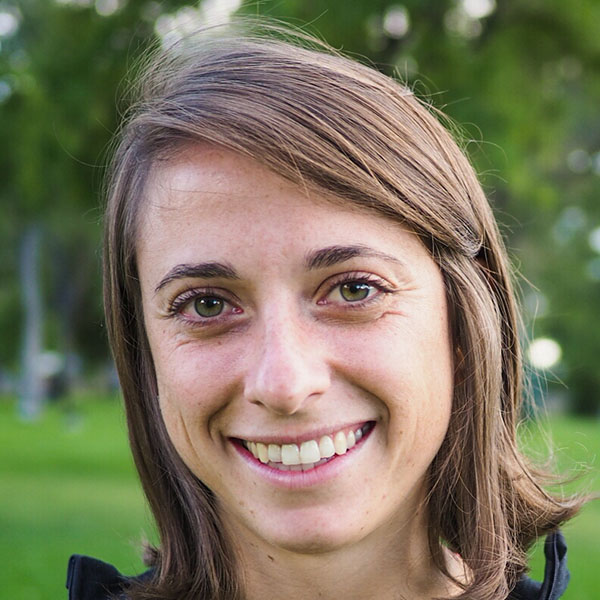
Jory Hanselman Mayschak is the Co-Founder and Executive Director of BaMidbar Wilderness Therapy, which promotes mental health and wellness in the Jewish community by offering therapeutic expeditions for young adults, wellness programs for adolescents and young adults, and mental health education for Jewish communal professionals. Vanessa Bernier is the Program Officer for Jewish Life at the Denver-based Rose Community Foundation, which seeks to advance inclusive, engaged, and equitable communities through values-driven philanthropy. Jory and Vanessa have been in conversation for a little over a year.
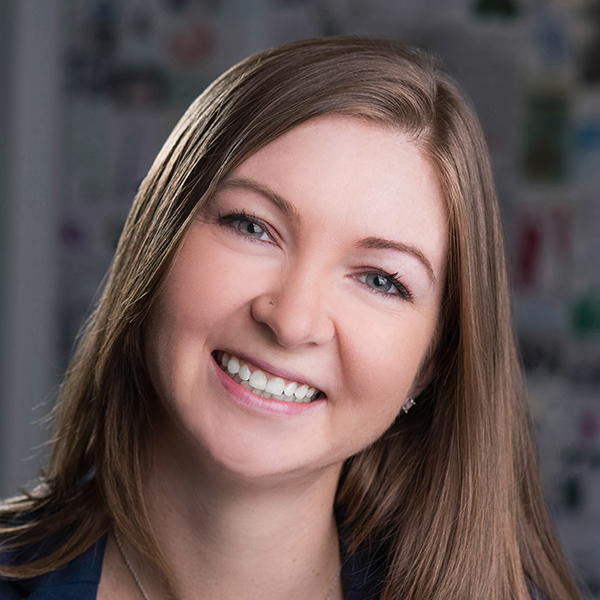
GrantED: How did you first meet each other?
Jory: BaMidbar Wilderness Therapy’s fiscal sponsor, Ramah in the Rockies, has a longstanding relationship with Rose Community Foundation. My first interaction with Rose Community Foundation was before Vanessa joined the team. I met with her predecessor just as BaMidbar was getting off the ground. We were in conversation over the years, but I never sought a grant. Vanessa and I met for the first time last fall. In the spring, I reached out to Vanessa. Our core programming had stopped due to Covid, and we were looking for ways to better support the community. I thought that Rose, as a community convener, would be able to help us think about that and might be able to make connections for us. As a result of those conversations, we applied for a Covid mitigation grant.
Vanessa: I first got to know Jory and the work of BaMidbar under the umbrella of Ramah in the Rockies. Rose Community Foundation was in the middle of crafting our new strategic plan, so we weren’t ready to talk about new grants or future priorities. As the pandemic’s impacts evolved, our priorities shifted. It was clear that BaMidbar was offering something that was critical to our community. It was also really helpful that when BaMidbar submitted a grant, we had already been in a conversation for a year. Jory kept me updated about the work they were doing and the pivots they made to support the community. Even the best grant application, crafted by the most sophisticated fundraiser, doesn’t always leave an opportunity for the organization to share its essence. It was really helpful that I had been able to see and discuss the work outside of the context of a grant request before considering an actual grant. I knew how to talk about the work and where it fit into the local ecosystem in a way that would have been more challenging if I had only had a grant application to help me understand the work.
GrantED: How would you describe your communications with each other, and what role does honesty and transparency play?
Jory: BaMidbar was going through a lot of organizational change even before Covid. We made a big pivot in 2019 and were planning to roll out a number of new programs in 2020. As I was building my relationship with Vanessa and Rose, I was very transparent. We are a young organization, and we are doing something different in the Jewish communal world. We are still trying to figure out how to best meet the Jewish community’s needs. In order to do this, I am transparent and open. I help our funders understand who we are, what we do, what our vision is, what is working, how we navigate change, and what we need to improve in order to achieve the highest level of impact.
Vanessa: From our conversations, I better understood BaMidbar’s needs and challenges. Jory didn’t gloss over the challenges or say “our work is perfect; we don’t need anything.” I had a lot of visibility into the organization as a whole. I felt a lot of trust. I knew Jory had been working really hard to build national and local partnerships. I wasn’t only hearing that from Jory, I was also hearing that from others in the community. We try to communicate our expectations clearly – not only standard expectations such as how you can use the funds, but also expectations around being able to come to us for other kinds of support or when something challenging comes up. Our goal is to be helpful and not punitive. This framework makes it easy for both of us to give each other feedback.
GrantED: Is it hard to be so open with each other?
Jory: There are definitely times when that openness feels risky. For example, BaMidbar was facing significant organizational changes last spring. It’s challenging to share sensitive information while also trying to build a new relationship with a funder. I spent a lot of time thinking about how to communicate what we were discussing effectively and transparently. How could I communicate a vision while sharing the unknowns? I hesitated about how to share that information and the timing of the conversation.
Vanessa: I think this is a challenge that funders face too. Sometimes we gather information to gather information, but we don’t know how that information is going to be used in decision making. We need to balance the Foundation’s need for information and certainty while also supporting organizations where they are. For example, I was asking our grantees about the [Paycheck Protection Program] loans — did they apply? Did they receive them? And I think I may have made our grantees nervous wondering: “Does saying ‘yes, I got a PPP loan’ mean I will or won’t get the grant?”
GrantED: What have you gained from being in frequent communication?
Jory: I try to communicate as clearly and frequently as I can. One of our recent strategy shifts was to do more programming through partnerships. It was hard to figure out which partnerships made sense. Vanessa has deep knowledge of the community and a bird’s-eye view of what is happening. She helped me to identify and make connections to potential partners. The more we communicate, the more we can lean on her as a resource to achieve our mission.
Vanessa: By the same token, we were able to lean on BaMidbar as experts in the wellness field. It was important to have a local partner that understands the Foundation and the new field we were entering. BaMidbar had the right combination of expertise in wellness and mental health, national perspective, and local relationships.
Jory: One of the biggest assets of our relationship with Rose, is having them as a thought partner. As a young leader, leading a young organization, knowledge exchange is incredibly valuable.
Vanessa: One of the things I wish I had realized earlier in my career is that we don’t need to do things the way they have always been done. As grantmakers, we need to be willing to experiment and take risks. There is a growing desire — from both grantmakers and grantseekers — to engage in trust-based philanthropy, and that is something the Foundation is committed to cultivating.
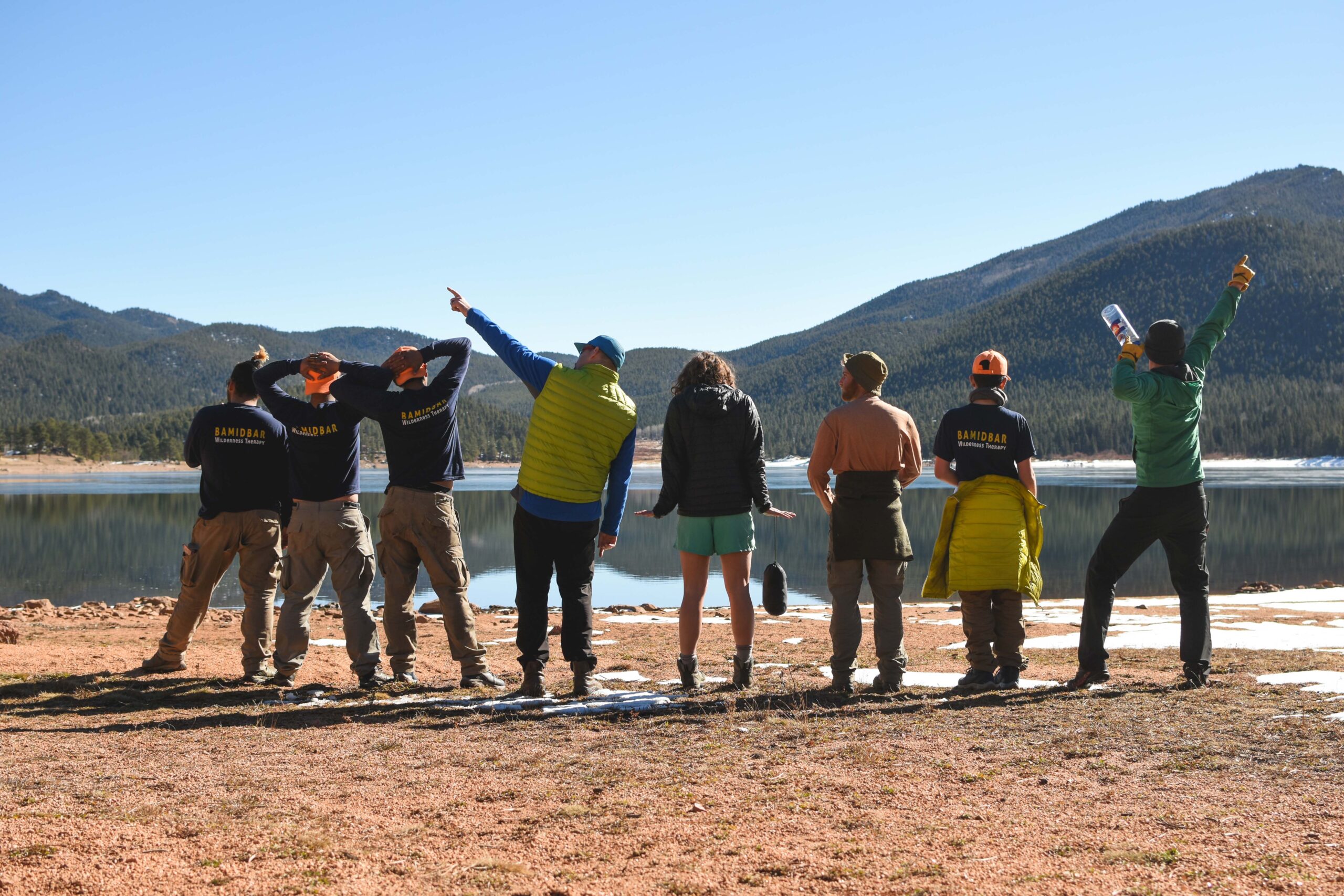
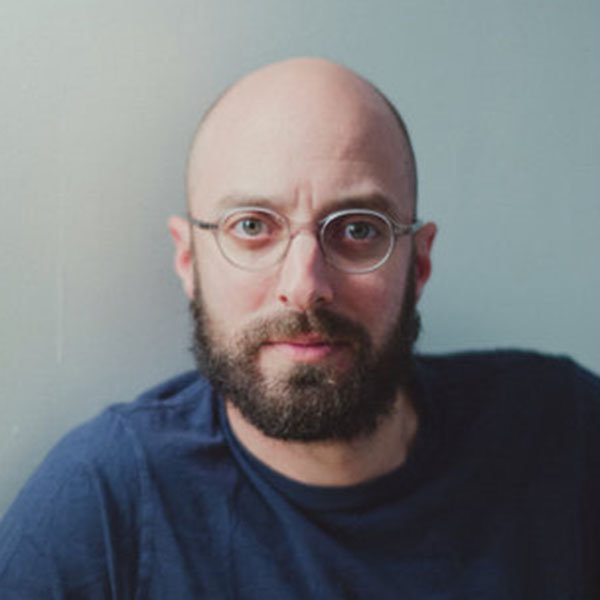
Jon Adam Ross is a Founding Artist of The In[heir]itance Project, a theater company that practices an open artistic process to create theater from authentic community dialogue about shared inheritances. Ayalon Eliach is a Senior Advisor at the Lippman Kanfer Foundation for Living Torah, a foundation that seeks to repair and enrich the world through thriving Jewish life. Jon and Ayalon have been in conversation for two and a half years.
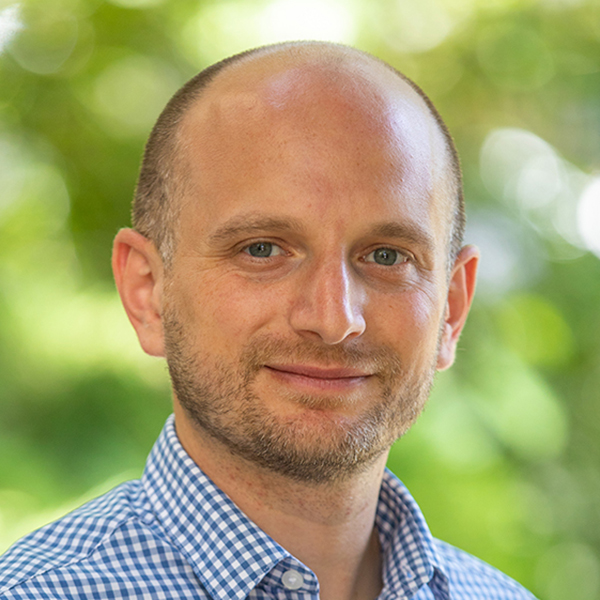
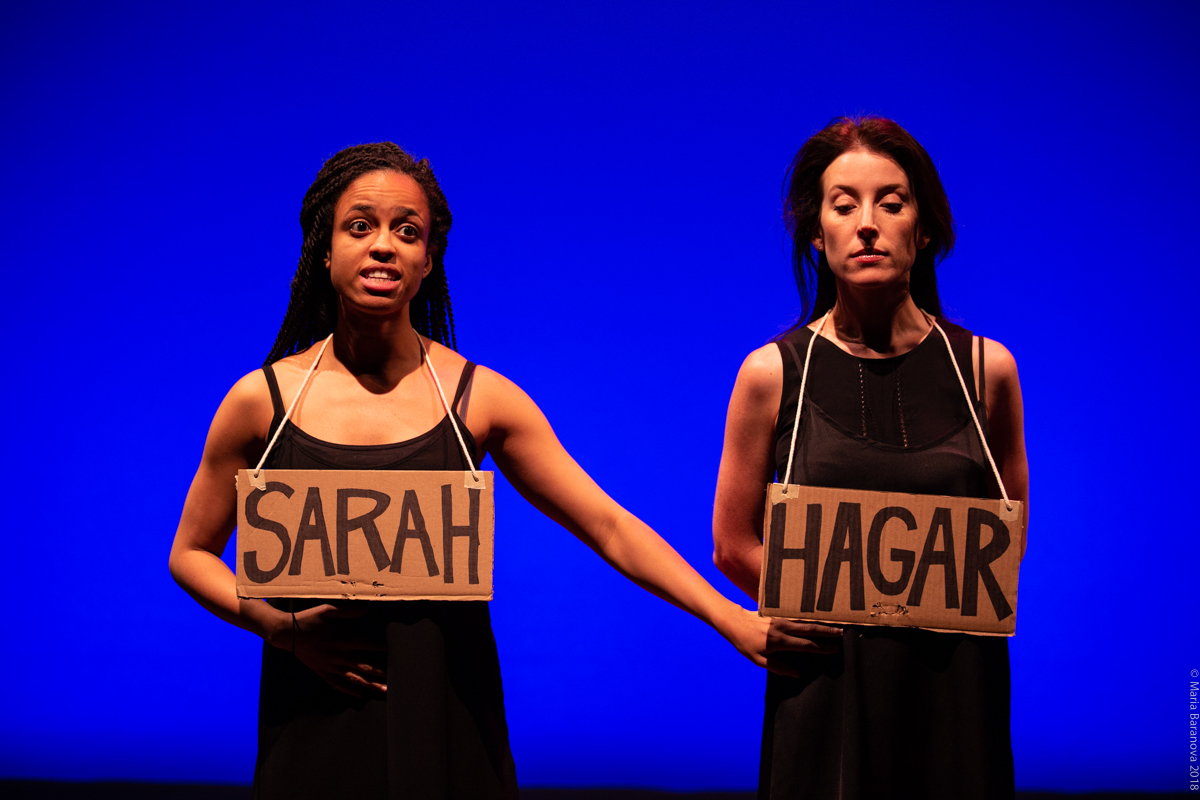
GrantED: How did your relationship begin?
Jon: We first met at a retreat for arts organizations, where I was fortunate to be one of the artists invited as a participant and Ayalon was there representing the Lippman Kanfer Living Torah Foundation that had helped to fund the retreat. Then we met again at a dinner for the Covenant Foundation.
Ayalon: At around that time our foundation was running the second round of the Lippman Kanfer Prize for Applied Jewish Wisdom, and we were still in the process of receiving applications. We had actually received a lot of applications, but I noticed when we were reviewing them that we hadn’t received one from The In[heir]itance Project. I had been very impressed by the work they were doing and so I reached out to ask Jon if they would want to submit an application — with no guarantee that they would be selected.
Jon: I looked at the application and saw that it was due very soon. I realized I could put it together in the time available, but I didn’t want their first impression of us to be a rushed application for a one-time prize. So I called Ayalon back and said: “Can we do lunch next week instead?” What was remarkable about that conversation is that I wasn’t meeting with Ayalon because of a specific project I wanted funding for, and Ayalon wasn’t meeting with me because there was something he wanted from me. It was a dream conversation, because we had lowered the stakes. It was just us talking about ideas and values. We each spoke about the projects we are doing and the projects we have in the pipeline, what we are trying to accomplish, and how we are trying to accomplish it. What began two years ago over sushi continues today.
Ayalon: To me, the real power of that conversation came from your end. It was striking to me that I had reached out to you to encourage you to apply for this prize and your response was, “This is not necessarily the right time for us to do this.” That sort of honesty made space for a different kind of conversation. Funders operate with a Venn diagram in the back of our minds. We want to find the overlap between our ideas and your ideas but we never want to push an organization to be something it is not, and we don’t want to be pulled in a direction that doesn’t make sense for us. Understandably, when an organization needs to raise funds, they will present themselves as fitting into our side of the circle. In that conversation, it felt like we were free to explore the potential overlap without assuming it would be there, and that just opened things up. We are both looking for opportunities together, and we are not trying to force anything. We are looking for Jewish wisdom applied in different ways. We often see many of the same modalities used. The In[heir]itance project presents an exciting pedagogy and modality for people to be engaged in and exposed to Jewish wisdom.
Jon: It took us a year and a half to figure out what we were going to do together. That is a long time in terms of investing in a conversation and not knowing if it is going to pay off.
GrantED: What do you think makes your relationship work so well?
Ayalon: Jon shares lots of updates with us, both challenges and achievements. It doesn’t feel like a PR move; it feels like you are trying to bring us inside the work. We want to be there to celebrate with you and to help you in difficult times. Getting those updates has been a really important part of building the relationship. We are always cognizant of not wasting people’s time. We try to be as transparent and open as possible about where we’re at and what we see as the likelihood of funding. And at the same time, we really believe that our power in terms of the impact we want to have on the world comes from our partners. We give grants because we believe that the work these organizations are doing is the work that needs to be done in the world. And we know that by funding their work we increase their power to make a difference. So we spend a lot of time trying to find the right people and the right organizations. We could never do the things we want to do without these partners.
Jon: Sometimes I wondered if I was reaching out too much. But if something goes wrong, I need you to know about it right away, because you’ve invested in this project. And if something goes right, I really want you to know about it right away, because you have invested in this project. So it goes both ways. When Covid hit we did not immediately make all programming virtual. We wanted to be thoughtful about what adaptations made sense. We had a project funded by Lippman Kanfer that was supposed to conclude in June 2020. And that was supposed to trigger the next project in the series and the next round of funding. I was able to speak with Ayalon openly about the timeline and the domino effect on the budget. It is scary to say that you are not going to accomplish something that you said you were going to accomplish. I didn’t think we were going to be punished for something outside of our control, but I was still nervous. Ayalon put me at ease by calling me in the early days of Covid and asking: “What are you working on? What are you thinking about? Where are you in terms of your process of adapting your work?” He offered us an opportunity to apply for a Covid-specific grant even though we had not completed the first project.
Ayalon: What enabled us to do that was the trust, self-reflection and honesty that was already present in our relationship. We wanted to make sure that our partners were getting their basic needs met early on. We had planned to bring some of the In[heir]itance Project’s work to the JFN conference in March 2020. When it was clear that this wouldn’t be possible [the conference was cancelled because of Covid] and there were going to be some financial losses, we wanted to mitigate those losses. Additionally, we were curious to see how people were applying Jewish wisdom to the pandemic. So we made an additional grant to cover the losses and support new work.
We plan to convene online (and when possible, in person) facilitated conversations between grantmakers and grantseekers to explore some of the topics and themes featured on this site. Sign up for our email list here.
We plan to convene online (and when possible, in person) facilitated conversations between grantmakers and grantseekers to explore some of the topics and themes featured on this site. Sign up for our email list here.

Bader Philanthropies, Inc., a Jewish Funders Network member, invests in people and their communities, in Milwaukee, across Wisconsin, and in places throughout the world. The Foundation continues the legacy of Helen Daniels Bader’s passion for people, while furthering Isabel and Alfred Bader’s shared interests. Bader Philanthropies Inc.’s community partners represent a collage of diverse organizations. Since its founding in 1992, Bader Philanthropies has committed more than $300 million in grants and program related investments (PRIs) in a variety of issue areas that improve the quality of life of people – young and old. Areas of interest include: Alzheimers & Aging, Employment Community Matters, Neighborhood Engagement, Social Equality , The Arts, Urban and Jewish Education, and Youth Development.
Bader Philanthropies has a long history of surveying its grantees about how the grantees are doing. The decision to participate in the Center for Effective Philanthropy (CEP) Grantee Perception Survey in 2017 was an opportunity to take that dialogue a step further. The foundation had never invited candid feedback on its own systems and processes before. According to Maria Vento, Vice President for Grants and Impact Investments, “We had always surveyed our grantees to have them tell us how they were doing, but in this case we wanted to flip the tables and really put ourselves out there and have them tell us how we are doing.”For Bader Philanthropies, the opportunity to participate in the CEP process coincided with the opening of new foundation offices in the Harambee neighborhood of Milwaukee. The move sparked a period of reflection and a feeling among the foundation staff that this was an opportunity for a fresh start. Ben Callif, Research and Mindset Director stated: “The survey was just one of many ways that the foundation as a whole was taking time to reflect on the way it did business and interacted with its partners and grantees.”
The survey launched in 2017 and took a full year to complete. All foundation grantees, local and international were invited to participate in the anonymous 50-question survey. The survey probed grantee experiences with the foundation’s selection process, relationship with the foundation, and perceptions of the foundation’s impact on organizational, community and field level. Questions were for the most part multiple choice or scaled responses with a few open-ended response questions. Among the questions: “How aware is the Foundation of the challenges that your organization is facing?" or "To what extent was the Foundation's reporting process straightforward?"
CEP administered the survey to a list of grantees provided by Bader Philanthropies. Two hundred and ninety grantees were invited to participate, and 182 actually participated (63% response rate). CEP synthesized the data and supported an internal team from the foundation (composed of senior program officers, a grant manager, and the Research and Mindset Director) in the data analysis. CEP was able to help Bader Philanthropies compare their results to the larger data pool that has been collected by CEP.
The survey findings were mixed, with the foundation earning higher scores in some areas of its work and lower scores in others. While some findings were expected, others were more surprising. For the most part, the team was not surprised by the areas in which it received lower scores, some of which were areas the team did not see as important. In other cases, it got a medium score where the team had expected a higher score. It was some of those dimensions where the foundation was doing “fine” but not “excellent” where it decided to invest in improvements. The team was pleased by the positive feedback received. In particular, they were relieved to learn that the foundation’s rapid response system (the capacity to make grants quickly in an emergency) was viewed very positively by grantees and that it received high scores on “Community Impact”. This aligned with the team’s own understanding of the foundation’s strengths.
Among the survey findings, two areas for improvement stood out: 1) communication with grantees, and 2) grantee interactions with the grant reporting system. The lowest overall score that Bader Philanthropies received on the assessment was around the grant selection process. Prospects complained that they did not understand how they were being assessed during the application process. Grantees noted that they submitted reports, but did not receive any feedback on them. Both grantees and prospects felt they had to be cautious about sharing challenges , obstacles, or failures in their work.
The foundation leadership had long wanted to align their process for grantmaking with their vision of relationship building, specifically their view that relationships with small grantees are just as important as relationships with bigger, more established entities, and they wanted those relationships to be authentic, not bureaucratic. The Grantee Perception Report convinced the Bader team that the processes they had set up were getting in the way of relationship building. As a result, Maria Vento said, “We completely overhauled our entire grant selection process. We just started from scratch.”
The team decided to focus on revamping the foundation’s website, which serves as the platform for grant applications, reporting, and ongoing communication. They also focused on restructuring the application process itself, so that applicants had more opportunities to interact with staff and ask questions. Other things that the foundation changed as a result of what it learned through the grantee perception survey:
As a result of the changes, the staff at the foundation feels more connected to the grantees and prospective grantees, and more involved in their work. The staff’s original goal in responding to the survey feedback was to address issues with the website, but what they learned was that the real issues were around relationship-building. Previously staff had not encouraged prospects and grantees to be in conversation with them; now the staff initiate a conversation early in the relationship and encourage frequent communication. As Maria noted, important conversations are happening earlier: “For example, we are talking about metrics early in the process and really getting into detail on what the organization is going to measure instead of waiting to receive a full proposal and then tearing that apart.”
Staff report that, as a result of these changes, they spend more time on the phone with grantees, but that time spent in conversation is reducing the amount of time spent reviewing applications of groups that are not a good fit, problem solving with organizations in crisis, etc. Ben observed, “At foundations we are often reluctant to start a conversation because it might not end in a grant. How much time are you going to put into those early conversations where you don’t yet know if it is the right fit? What we learned is that those early conversations teach us a lot about the fit.” The staff have also found that connecting frequently with prospects and grantees enables them to report more effectively to the foundation’s board. They are better able to see trends in the field and share those observations with the board.
So far the feedback from grantees and prospects about the changes made in response to the report findings has been overwhelmingly positive. Grantees appreciate the increased frequency of contact and find the new reporting forms to be easier and quicker than the old ones. According to Ben, “We have increased the frequency of reporting which you would think would be awful for grantees, but paradoxically everybody loves it;the reports are easier and quicker.” Maria added that increased reporting works because it is coupled with more responsiveness from the grants staff: “The worst thing about our previous system was that people would put time and hard work into writing something, and they would hear crickets. Now, when they submit a report every six months, we send them a little love note.”
Bader Philanthropies plans to do another grantee perception survey again in the future. It has been phasing in the new reporting system, and it does not make sense to run another survey until all grantees have been on the new system for a full cycle. The foundation leadership believes that grantee perception surveys are a critical tool for delivering on mission.
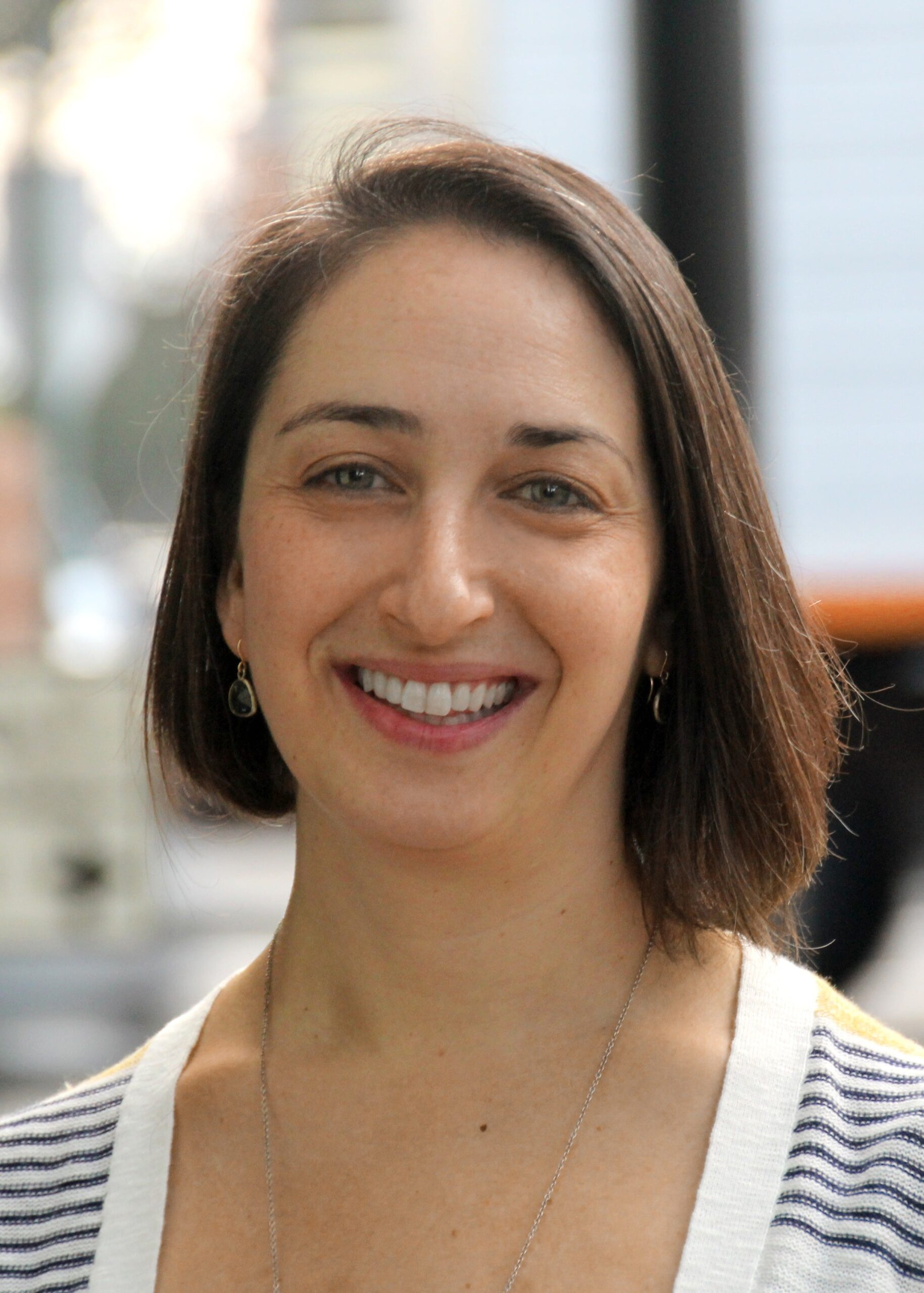
She has primary responsibility for designing and facilitating GrantED’s grantmaker/grantseeker conversations. For 10 years, Taylor developed and led youth development programs in the Bay Area Jewish community. As a Shofar Fellow, a participant in the Community Leadership Program with the Shalom Hartman Institute, and a current Fellow with Generation Now, Taylor gained expertise in designing educational experiences that engage and positively impact the Jewish community. Taylor received her master’s degree in Learning Sciences from Northwestern University.
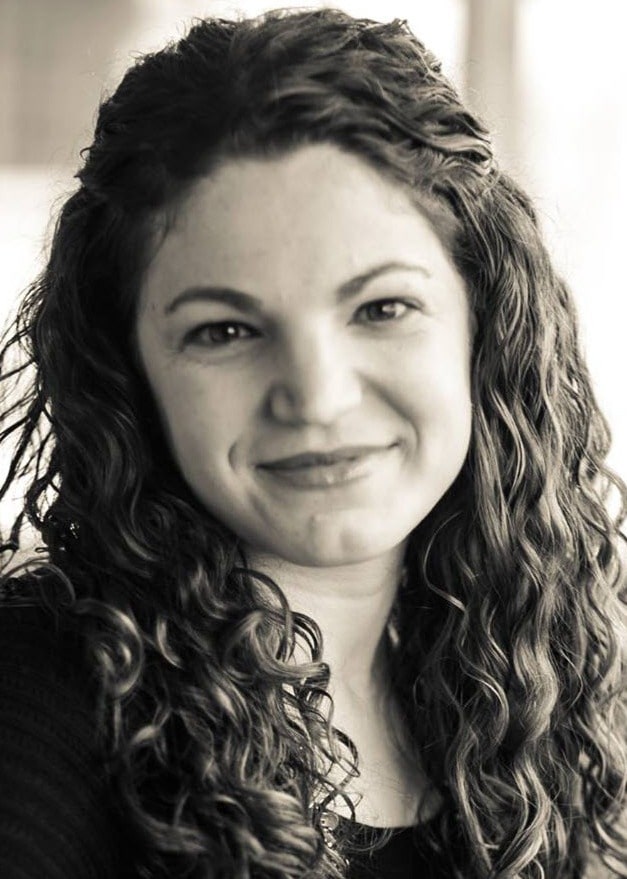
She played a key role in developing GrantED and formulating its strategy, particularly as it relates to programming. In addition to planning, designing and facilitating many of GrantED’s workshops, she forges relationships with potential partners and serves as the primary point person for JFN members seeking to get involved with GrantED. At JFN, she is responsible for programs, including frequent webinars, and special projects. Before joining JFN, she held numerous roles at UJA-Federation of New York, most recently as Director: Network Planning and Optimization & Information and Referral Center.

She serves as the project manager for the GrantED website and plays a large role in resource identification and curation. At UpStart, Sarah Beth creates opportunities for funders to connect with UpStart's network organizations and to deepen their relationships in the Jewish entrepreneurship field.
She serves as the project lead for GrantED overseeing all aspects of strategy, program design, team management, and collaboration. Aliza helped to develop the original and adapted materials for the resource hub (grantmaker/grantseeker conversations, case studies, and self-assessment tools) and serves as co-facilitator for the grantmaker/grantseeker facilitated conversation series. Aliza has served as an executive director and an independent consultant to philanthropies, capacity-builders, and social justice organizations.
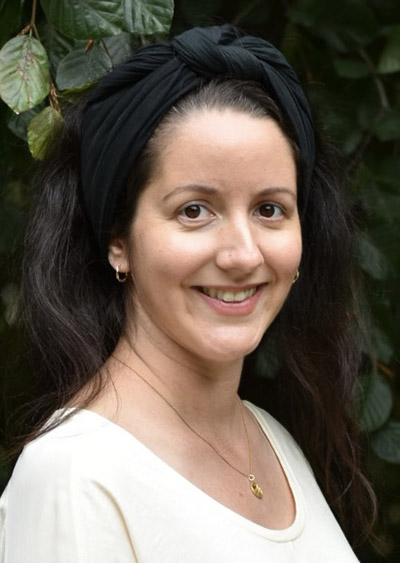
She curates resources for the site, works in program development, and fields inquiries about GrantED. Before joining JFN, Alana was the Program Director for the Center for Jewish Living at the Marlene Meyerson JCC Manhattan.
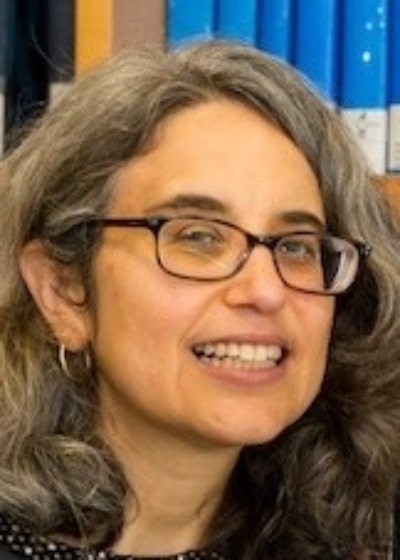
She oversees all of GrantED’s communications, editing all original content, helping to curate external resources, managing GrantED’s website and editing its newsletter. She also strategizes and implements GrantED’s media and marketing. Before entering nonprofit communications, Julie was a journalist, serving as managing editor of My Jewish Learning, online editor at the Jewish Telegraphic Agency, and associate editor at The New York Jewish Week, where she wrote "In the Mix," a column and blog about intermarried life.

She serves as a thought partner and strategist on GrantED’s visual and digital marketing communications, and tells compelling stories to promote GrantED to a wide audience. In her role at UpStart, Elisheva develops and drives brand strategy, integrated marketing communications, and experience design. She feels passionately that driving big conversations and telling compelling stories is the future of UpStart’s marketing, and sees its work with GrantED as essential in moving the needle toward equity and innovation in the Jewish community.
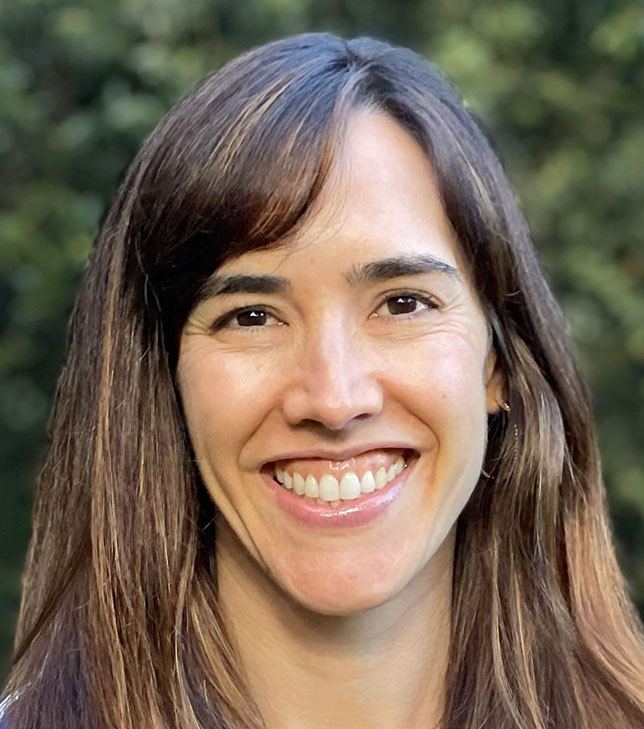
Elana Rodan Schuldt
The Rodan Family Foundation was founded in 2018 to ensure that the next generation has a meaningful relationship with the local Jewish community, Jewish tradition, and the greater Jewish people. We invest in the future of the Jewish people by cultivating peer-driven communities, building a sense of belonging amongst an increasingly diverse population, and bringing Israeli and American Jews closer together. Guided by the values of innovation, collaboration, and accountability, we are focused on best-in-class Jewish early childhood education, quality programming, and a strong organizational ecosystem locally in the East Bay community of Northern California, complemented by national investments in policy leadership and Jewish peoplehood.
As a relatively new foundation, my family (which includes two generations of active members) set out to learn objectively about our local Jewish community, specifically its strengths, weaknesses and opportunities, in order to inform our giving. We have always been active in East Bay Jewish life, but never had reason to step outside of our experiences and look at the community as a whole. To build a more objective, holistic picture of our community, we partnered with Rosov Consulting to help us gather evidence for investment & refine our priorities. One of the key findings from the study was that the diversity of our Jewish community is not reflected in organized Jewish life. 12-15 percent of our Jewish population identify as Jews of Color (JOC) and 25 percent of Jewish households include a non-white member. Yet, an overwhelming majority of Jewish organizations, including staff, boards and the people they serve, are composed of white Ashkenazi Jews. To build a vibrant, thriving Jewish community for the next generation, it is clear that we need to reach the full diversity of our community with meaningful Jewish experiences, and this starts by centering racial equity, inclusion and belonging at all levels of the organizational ecosystem.
While we recognize we have a lot to learn about how to build broad, diverse, thriving Jewish communities, we understand that this is urgent work that cannot wait. We committed to action, to learn while doing in the hopes of catalyzing meaningful progress now. We also did our best to maintain a strict focus on the East Bay community where possible, while keeping national scalability top of mind.
We identified four grantmaking priorities and sought out partners to lead the work.
We partnered with Bend the Arc to design a thoughtful JOC leadership pipeline pilot called Project Shamash that is supporting an incredible group of 20 local JOC professionals. We have also invested in JOIN for Justice’s JOC Organizing Fellowship to activate diverse leadership across the country and build a Bay Area Hub. And we supported Boardified in their efforts to elevate JOC board leadership with a new JOC Affinity group.
We partnered with PJ Library and the Bay Area Federation to recruit a diverse, wonderful group of parent connectors to build grassroots community among families with young kids.

Photo courtesy of the Jewish Community Federation and Endowment Fund.
We partnered with the Jews of Color Initiative (JOCI) on a round of grantmaking that builds capacity among White-Led Jewish organizations to better reach & serve Jews of Color in our community.
We recognize that sustained momentum comes from building broader funding support. To encourage others to invest in this critical work, we devote significant time to sharing data and perspectives with other local and national funders.
Without a roadmap, the path forward is not always clear. We have relied on the relationships we have built with partners — such as Ilana Kaufman of JOCI — to help us deepen our understanding and test strategies. A growth mindset and a willingness to embrace new ideas has and will continue to be critical as we proceed on this journey towards our vision.
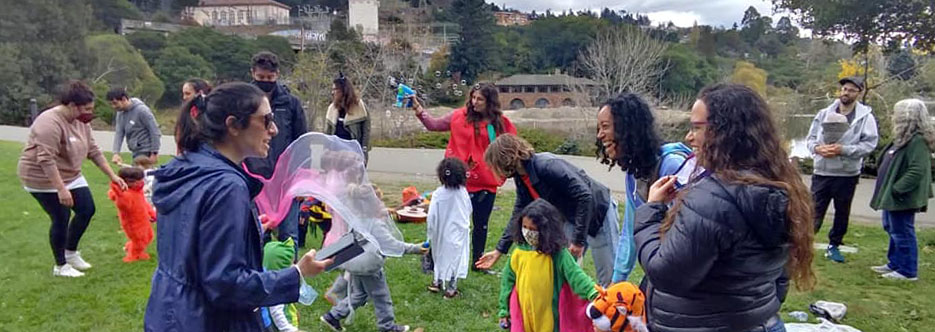
Photo courtesy of the Jewish Community Federation and Endowment Fund.
Working towards (and sustaining) a more racially inclusive Jewish community is deep, long-term work. At its core it requires questioning and re-questioning engrained practices and ways of thinking (how very Jewish!). You cannot do this work without putting in the time and asking yourself difficult, sometimes uncomfortable questions, like how is it that the demographics of our Jewish community have evolved, but our boards & communal senior leaders look very little like the people we are trying to reach? Why is this the case and what does it say about our organizations and ability to change? Why is it that Jewish leaders of Color and JOC-led organizations are receiving far less funding support on average than their White peers? What does this say about our blind spots as a funding community and our need for better systems & decision-making frameworks? How do we balance goals for equitable racial representation with an equally-important focus on retention of these individuals and creating environments where they can lead and have their voices heard? We are trying to shift deeply embedded practices and beliefs. This is nuanced work that cannot be solved by money alone, but rather through thoughtful reflection, learning, intentional changes, and accountability. All towards our highest purpose - which is a thriving, vibrant, growing Jewish community.
While we are deeply committed to this work, we recognize that as a family foundation composed of white members, we have our limitations. We believe that people we are trying to reach are best equipped to determine the path forward. As a result, we have approached our grantmaking in this space a bit differently than we approach our other portfolios. We aim to find trusted partners who share our goals, like the JOCI, and give these partners full power to identify grantmaking opportunities, assess ideas, make funding decisions, and evaluate impact. Our initial partnership with the JOCI has resulted in incredible community engagement (the launch event they hosted had 100 attendees, representing a large proportion of our local community) and eight initial funded projects. JOCI will be bringing together these grantees over the next year to share learnings and further the work. We are so excited to learn alongside this group.
For many years our community has touted the fact that we are very welcoming. But if someone gives you a warm hello, yet indicates (whether subtly or not) that this is not a space for you, by questioning who you are and why you’re here, you won’t come back. We should all be striving for communities of belonging - where every Jew feels seen and valued, with communities centered around relationships, care and equity. The difference between welcoming versus belonging was clear from our 2017 Bay Area Community Portrait, which revealed that while 83 percent of Jews of Color feel welcome in Jewish spaces, only 31 percent feel they belong. This is Bay Area data that I assume holds true in most Jewish communities nationally. We have work to do to ensure all community members feel the Jewish community is both for and with them. This starts with reflection and learning, examining organizational policies and procedures, and shifting focus from programming to relationship-building. It continues with recruiting diverse boards and staff that mirror the diversity of the broader community, and progresses by enabling those we are trying to reach to drive a shared vision forward.
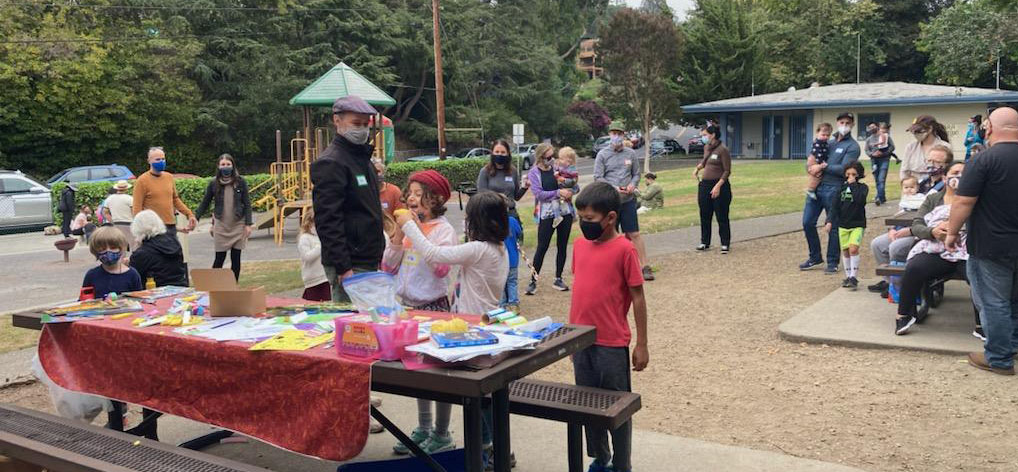
Photo courtesy of the Jewish Community Federation and Endowment Fund.
I am excited when I think about what is possible when this work is done well and when our Jewish spaces actually reflect the breadth of our community. That is where our future is strongest and most enduring.
But this requires us all to get involved. We may take different approaches and focus on different elements, but what matters most is that we each find meaningful ways to move Jewish communal life towards equity and belonging for all. I believe deeply that doing this work will make us stronger for many generations to come.
Elana Rodan Schuldt is President and CEO of the Rodan Family Foundation. Elana serves on the national board of directors for Moishe House and on the Bay Area Federation Endowment Committee.